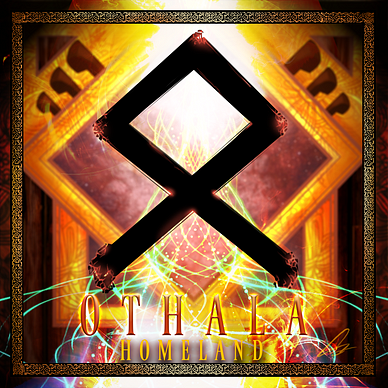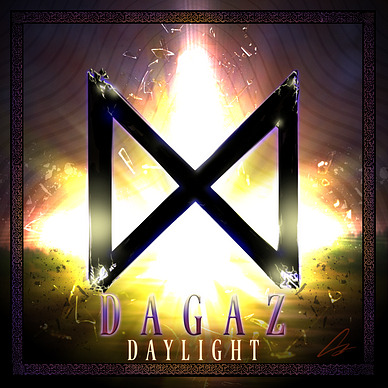The Rune Series: TIWAZ (Tyr)
How can we find the right way forward?
The Runes of this series belong to the Elder Futhark, one of the oldest alphabets in recorded history. Each Rune has endless interpretations and deep meanings; while their origin and/or intent is lost to history, most interpretations come from the ‘Rune Poems’, possibly written around the 8th century. This series will explore the Runes through a personal journey and intuitive interpretation of them, alongside knowledge collected from written works, such as ‘The Book of Runes’ (R.Blum, 1982), and the intricately crafted website ‘Runesecrets.com’ by Tyrael.
Greetings Dear Reader,
Welcome back to the Rune Series where we explore the ancient Runes through a psychological, practical, spiritual and philosophical lens.
You can check out the rest of this series below:



TIWAZ begins the third and final row, the stretch back home. So far, our journey has been tumultuous, especially as the second aett was entrenched in cosmic, incredibly powerful and often destructive forces. One of the most terrifying realisations you can have is that you are swimming in a labyrinthic ocean filled with invisible pushes and pulls. To this statement, the only pertinent response can come from Frank Sinatra:
“And that’s life! That’s what all the people say
You’re riding high in April, shot down in May.” (1966)
There’s no time to rest. The final aett begins by pointing us forward.
TYR
Rune Series 17/24
Third Aett: Tiwaz
Meaning: The God, Tyr
Associated English letter: T
TIWAZ, also known as Tīw is the Rune of the Norse God of War known as Tyr, similar to ANSUZ being the Rune of Odin and THURISAZ that of Thor. It likely could represent similar attributes as those embodied by the god himself, such as strength, justice, duty and courage. Much of the information about Tyr has been lost but the most popular story about him survives through the Poetic Edda. In this tale, Tyr sacrifices his arm in the mouth of the great wolf Fenrir.
Due to our mostly Hellenistic interpretations of polytheism, it’s easy to see Odin as chief divinity with the other gods hanging around him, similar to Zeus being king of the Olympian gods. Some scholars argue however, that Tyr may have been just as, if not more important than Odin himself. These are just speculations and questions we’ll never answer, but it’s fascinating to note the chief similarity between the two: the theme of sacrifice. Where Odin gave his eye in pursuit of wisdom, Tyr gave his hand.
But for what?
A worthy sacrifice
Let’s examine the story.
“It is one proof of his bravery that the Æsir were luring Fenriswolf so as to get the fetter Gleipnir on him, he did not trust them that they would let him go until they placed Tyr’s hand in the wolf’s mouth as a pledge.” (Gylfaginning, Prose Edda)
Fenrir is another popular character from Norse myth. We explored his meaning a little bit with JERA as it relates to the final battle of Ragnarök and the death of the gods. However, before that final catastrophe, Fenrir appears in his origin-story, where the gods attempt to imprison him using a powerful magical rope called Gleipnir. The gods resort to trickery in order to lure the wolf into bondage but Fenrir senses that they’re up to something. Tyr places his hand inside the wolf’s open mouth as a gesture of goodwill — one ultimately broken alongside it.
But why are the Aesir trying to imprison Fenrir in the first place? Apparently Odin knew about the old prophecies that foretold the end of the world and his ultimate death, swallowed by the great wolf that visibly grew larger with each day. Their plan could have been a futile attempt at changing the future.
Given the psychological lens we’ve examined the Runes in this series, what could Fenrir symbolise? I argued that he represents the untameable, animal-like tendencies of the ego. The gods of wisdom and knowledge can only hold it back for so long before the end of the world invites their collapse.
Like what you’re reading? The modern world is becoming more challenging for small artists/writers. Every word you read here is crafted with love and passion (and without AI) and Your support would enable me to spend a whole lot more time doing it. If it feels right, consider donating (:
The straight and narrow path
Check out the wonderful art below as well as more Norse-inspired artworks, prints and merchandise at Fateful Signs. I only found this artist now and I think he deserves your attention if interested in these topics! His rendition of Yggdrassil especially, is remarkable.
There is a relationship between Tyr and the wolf. Fenrir accepts to be bound with Gleipnir only when Tyr is ready to sacrifice his arm. Simultaneously, Tyr proves his bravery by doing so. But is this bravery or foolishness, since now a warrior-god has one less arm to fight with?
I think the question is answered by Tiwaz.
Its shape is that of what we commonly call an ‘arrow’ pointing up. The arrow is one of those symbols that are so common in our world today that they have found their way inside our subconscious where they require no translation: you see an arrow, you follow it. You go where it points. Every time you’re lost you look for the arrow and, just as its warfaring counterpart, you hope it always finds its intended mark.
Tiwaz therefore, could be said to represent the correct path forward, acting as a sort of guide or compass pointing north. If we combine this with the story of Tyr, can we then surmise that the correct path is through the gaping mouth of the great wolf?
The sharp teeth of Fear
It’s worth mentioning that serious spiritual work will undoubtedly bring about an encounter with the forces of darkness. Your own traumas and past pain must be confronted as they surface and this can be a very difficult process in the best of scenarios. In addition, it is my experience that personal baggage isn’t the only thing you’ll have to contend with as you climb the mountains of consciousness. There are also collective pulls into areas of complete despair that are simply part of our collective human experience. These areas will likely be encountered by the seeker and the only way to traverse them is by walking right through them.
As perceptions fall prey to the darkness however, the mind may ask very pertinent questions such as: ‘what’s the point?’ or ‘will this ever end?’ This is normal. Indeed, the most difficult parts to traverse are precisely those that invite feelings of hopelessness. This is the great mouth of the wolf, the ‘dark night of the soul’.
As the myth goes, Fenrir is actually born from a union of one of the gods and a giantess: namely Loki, the famous trickster god and Angrboða. This is significant because Loki is the god of lies and deceit — we could say he’s the god of illusion or what isn’t true/real (though he is more than this). Therefore Fenrir is the giant, terrifying product of illusion that even the gods fear when they see it grow larger each day.
It is said that fear is likewise an illusion but the intellectual understanding or acceptance of this doesn’t put an end to the experience of fear. The only way out of fear is through it.
Conclusion
As SOWILO shines a light on the perilous, deep canyons of the human soul, any human mind can find itself powerless when surrounded by monstruous things. Help is needed.
Faith in the process is fundamental. This is why TIWAZ points forward, always inviting us to march on through the murky, desolate landscape. What follows next is rebirth, not necessarily as a reward for the pleasure-seeking vain Ego, but as a natural consequence of all cosmic direction.
We can only go forward.
Blessings,
